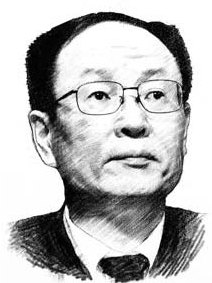What does the second half hold in store?
Updated: 2012-07-13 11:16
(China Daily)
|
|||||||||||
Q1
With analysts forecasting China's second-quarter GDP growth to hit a new low, do you envisage an even lower growth rate in the coming months? How much GDP growth do you forecast for the third quarter?
Q2
The central bank has already cut interest rates twice, first in June, then in July. How much do you think the interest rate cuts are helping the economy's growth? And do you think there is still room for further interest rate cuts and cuts in banks' reserve requirement ratios in the remaining months of the year?
Q3
While inflation is coming down, do you think it is coming down so abruptly as to threaten deflation? What's the likelihood of deflation emerging in China today?
Q4
Do you think a large increase in investment in government projects will help turn around the economy? Or do you think there are other ways to better-stimulate growth?
Wang Yiming

vice-president of the Academy of Macroeconomic Research of the National Development and Reform Commission
A1
China's GDP growth rate in the second quarter is expected to be the year's slowest, after which it may slowly rebound from July.
Whole-year economic growth is likely to be 8 percent, supported by adjusted macroeconomic policies.
The economic slowdown since the beginning of this year differs from the deterioration in 2008 in that the employment rate has not sharply dropped. Thus there is no need to overly worry about the short-term dip.
A2
Given the time lag related to a loosening of monetary policy, it is unwise to rapidly lower interest rates or the reserve requirement ratio.
The central bank's recent two asymmetric cuts of one-year benchmark interest rates are expected to decrease commercial banks' profit margins in the short term and reduce manufacturing companies' financing costs, which could encourage them to increase production.
In the third and fourth quarters, it is possible that the People's Bank of China may continue to lower the RRR because current market liquidity is insufficient.
A3
Inflation will be at a relatively lower level this year, with a forecasted CPI reading of 3 percent, because of the slumping prices of imported resources and domestic agricultural products.
However, deflation is not possible for China, as steadily growing labor costs are expected to boost prices in the medium to long term.
The current decline in new orders points to weakening market demand, but it is only a temporary scenario influenced by the gloomy economic environment.
The government should watch out for potential "over stimulation", which may result in more serious excess production capacity and do more harm to economic development.
A4
Stabilizing investment is the key measure to promote economic growth at the present stage. It doesn't mean that more new infrastructure construction projects should be approved, but rather that investment should be accelerated in projects that have already been started.
As the government has stated that it will not ease property curbs, one of the possible "hot investment fields" may be the urban transport system, including building subways and improving the bus network.
This is a good opportunity to promote companies' technological upgrading, which can help to improve their production efficiency and increase profit margins.
In addition, investment in healthcare should be accelerated.
Today's Top News
President Xi confident in recovery from quake
H7N9 update: 104 cases, 21 deaths
Telecom workers restore links
Coal mine blast kills 18 in Jilin
Intl scholarship puts China on the map
More bird flu patients discharged
Gold loses sheen, but still a safe bet
US 'turns blind eye to human rights'
Hot Topics
Lunar probe , China growth forecasts, Emission rules get tougher, China seen through 'colored lens', International board,
Editor's Picks

|

|

|

|

|

|





